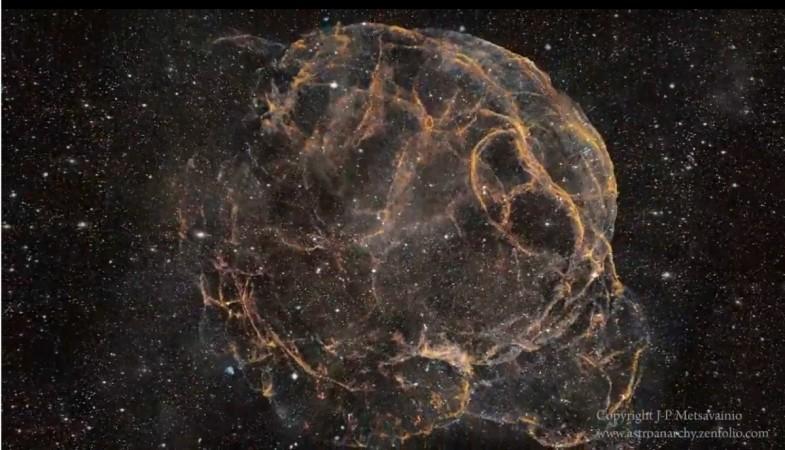
A new photo of supernova remnant Simeis 147 a.k.a Spaghetti Nebula has been released online. Straddling the border between constellations Auriga and Taurus in the Milky Way galaxy, it was discovered in 1952 by the Crimean Astrophysical Observatory using a 25-inch Schmidt-Cassegrain telescope.
Also Read: Saturn's moon Titan underwent Mars-like evolution
Also known as Sharpless 2-240 and SNR G180.0-0.17, the nebulous area is fairly large with an almost spherical shell and filamentary structure.
Simeis 147, also known as the Spaghetti Nebula. By Nikolas Kizilian pic.twitter.com/9frTdbEn90
— Sergey Silkin (@sergey_silkin) March 8, 2017
The remnant has an apparent diameter of approximately three degrees, an estimated distance of approximately 3,000 light-years, and an age of approximately 40,000 years, Science World Report reported.
The nebula possesses extremely low luminosity because of which it is hard to spot it. It is believed that after its stellar explosion, a rapidly spinning neutron star known as pulsar PSR J0538+2817 was left behind in the nebula core, which gives away strong radio signal. This is the only remains of the original star's core, according to NASA.
The latest image shows enhanced reddish emission from ionised hydrogen.
Supernova refers to a cosmic phenomenon which occurs in the last stellar evolutionary stages of a giant star's life. An enormous explosion characterises the supernova which triggers the sudden appearance of the bright new star before it steadily declines over a span of months or many weeks.
Walter Baade and Frits Zwicky had established the term supernova in 1931. In Latin, the term "nova" stands for "new", whereas in astronomy, the term refers to a temporary new luminous star.
Only three Milky Way supernovas have been spotted through naked eyes so far, while supernovas present in other galaxies have been observed with the help of telescopes.
"The Kepler's Supernova in 1604 was the most recent that was directly seen in the Milky Way. In the statistic observation of supernovae, it indicates that supernova happens on average about three times every century in the Milky Way," Science World Report reported.
Check out the video of 3D-conversion of Simeis 147 supernova remnant:









